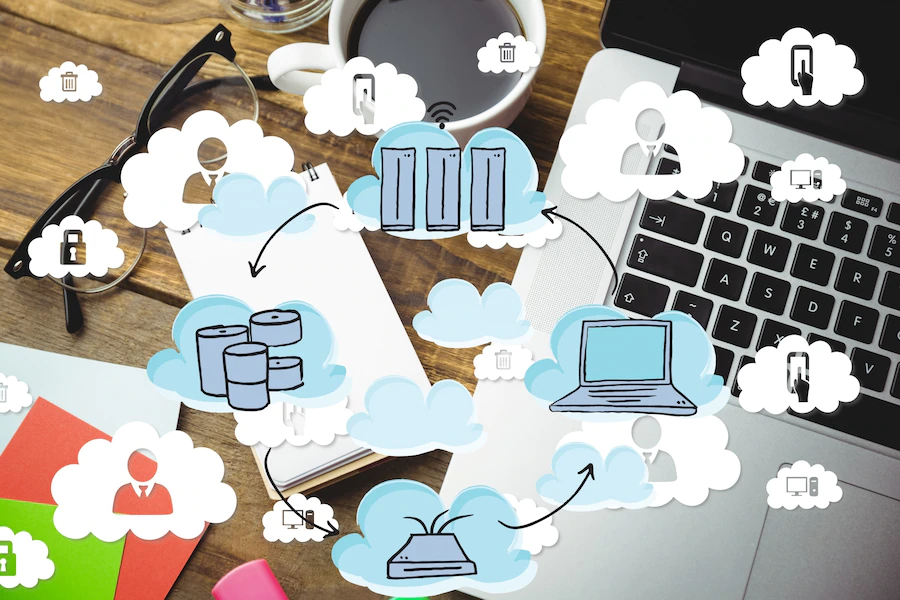
In the realm of information technology, upgrading your technological infrastructure mirrors the intensity of high-stakes sporting events. Just as a coach meticulously prepares for victory, effective desktop migration services demand a strategic and methodical approach. The significance of seamless desktop transfer cannot be overstated – it is the linchpin of business continuity and competitiveness. This comprehensive guide from the experts at ModLogix draws insightful parallels between the world of IT triumphs and sporting conquests, outlining a winning playbook for migration that guarantees growth and a competitive edge in the digital age.
The Importance Of Desktop Migration Services:

- Enhance Efficiency: ensure that your systems are not only up-to-date but also optimised for peak performance.
- Elevate Security: shift to secure platforms to mitigate vulnerabilities and safeguard sensitive data.
- Enhance User Experience: equip users with contemporary tools and interfaces, thus fostering smoother workflows.
- Minimise Downtime: expert migration strategies ensure minimal disruptions, enabling uninterrupted operations.
- Sustain Competitiveness: stay attuned to evolving technological trends and maintain a competitive stance.
Comprehending The Terrain: Desktop Migration Fundamentals
Visualise a marathon runner meticulously studying the track before the race begins. Similarly, desktop relocation in the IT domain involves rearranging digital components, akin to solving a complex puzzle. The objective? To optimise your technology by replacing outdated elements with cutting-edge counterparts. This process encompasses identifying potential obstacles, ensuring compatibility, and paving the path for a seamless sprint toward technological triumph.
Crafting Your Dream Team: Key Figures In Desktop Migration
Much like a championship-winning team, the success of desktop migration hinges on collaborative efforts. IT specialists provide their expertise, project managers assume the role of coaches, while end-users contribute invaluable insights. Effective communication among these roles fosters a coherent strategy for a triumphant migration.
Forming Your Dream Team:
- Designate an IT specialist or team to oversee the migration process.
- Appoint a project manager to organize and manage the migration project.
- Engage end-users to gather input, addressing potential user-related challenges.
Creating A Transition Strategy: IT Migration Planning
Think of an experienced quarterback drawing up game plays. In IT, making a migration plan is like crafting a playbook. It involves assessing the current state, finding weaknesses, and getting ready for future challenges. By pinpointing vital apps and assessing risks, you set yourself up for a smooth transition.
Cultivate A Comprehensive Migration Strategy:
- Define the scope of the migration, including the systems, applications, and data to be transferred.
- Identify possible risks and challenges that could arise during the migration process.
- Craft a detailed transition plan, outlining tasks, timelines, and responsibilities.
Pre-Migration Warm-Up: Preparing For Desktop Transformation
Similar to athletes stretching and warming up before a match, IT systems require pre-migration preparations. This entails backing up crucial data and evaluating software compatibility. Effective preparation mitigates risks and guarantees a smoother transition. It’s comparable to ensuring that your team is physically fit and mentally focused before the game commences.
Conduct Pre-Migration Testing:
- Evaluate the current IT environment, identifying the hardware and software in use.
- Safeguard critical data and applications to avert data loss.
- Perform compatibility assessments to ensure that the software is compatible with the new environment.
- Develop a communication plan to keep all stakeholders informed about the impending transition.
Executing The Grand Migration
As the whistle blows and the sports match begins, the transfer process sets in motion, relocating your data and applications to their new digital abode. Just as every point scored counts, each step of the migration necessitates meticulous execution. It’s about preserving data integrity, minimizing downtime, and guaranteeing a successful shift.
Carry Out The Migration:
- Initiate the relocation process as per the predetermined plan and timeline.
- Closely monitor the transition to ensure seamless execution according to the plan.
- Keep stakeholders updated about progress and any unexpected developments.
Maintaining Command: Vigilance And Problem-Solving
Picture a coach observing the game from the sidelines, analyzing plays, and making swift adjustments. Likewise, during migration, vigilant monitoring is essential. This practice helps identify potential glitches early, ensuring a smooth journey. Analytics and performance metrics serve as your game statistics, offering insights into performance and guiding future strategies.
Validating Data And Testing:
- Authenticate the integrity and precision of the migrated data and applications.
- Conduct testing in the new environment to guarantee the proper functioning of all functionalities.
Celebrating Triumph: Post-Migration Evaluation
Just as athletes review game footage to hone their skills, a post-migration assessment provides insights for enhancement. Reflecting on both the successes and challenges of the displacement enables learning, adaptation, and growth. In the same way that athletes evolve with every game, your IT environment advances with each migration, streamlining future endeavors.
Post-Migration Assessment:
- Thoroughly evaluate the displacement’s aftermath to pinpoint any issues or areas needing improvement.
- Seek feedback from end-users to gauge their experience and address any post-migration concerns.
Team Synergy And User Engagement
Just as fans inject life into sports, end-users are vital in the realm of IT. Engaging them fosters a sense of ownership and garners feedback, guiding improvements for a resonating migration.
Insights From The Experts
Stephanie Racine, an IT expert at Ave Point, emphasises that comprehensive planning and teamwork drive effective migration. Her wisdom aligns with the importance of a united team and strategy in sports.
Migration Impact
Structured plans have led to a 78% reduction in downtime and enhanced productivity. Microsoft recommends scrutinising dependencies for recovery goals, while AWS migration promises reduced costs, heightened productivity, and minimal downtime – underscoring the significance of pre-planning.
Continuous Monitoring And Enhancement:
- Sustain ongoing monitoring of the new environment to detect performance issues or areas for optimization.
- Engage with end-users consistently to gather feedback and iteratively improve the system.
Practical Tips And Real-World Instances
For a smoother transfer process, consider involving end-users in interactive workshops. Seasoned IT manager Sarah Johnson found that educating users about the migration process curtailed resistance and nurtured a positive environment.
Effective Communication And User Training:
- Communicate the migration plan transparently to all stakeholders, including end-users.
- Offer training sessions or resources to acquaint end-users with the new environment and address concerns.
Emerging Trends And Future Prospects
As technology advances, migrations become more commonplace. Cloud-based solutions, such as virtual desktop infrastructure, promise even smoother transitions. Embracing these innovations ensures you remain ahead in the ever-evolving tech arena.
Upcoming Trends In Desktop Transfer Services:
- Cloud Shift: move to flexible, scalable cloud solutions.
- Security Priority: focus on strong cybersecurity during migrations.
- AI Streamlining: use AI to enhance relocation processes.
- Remote Work Optimisation: improve remote desktop experiences.
- User-Centric Focus: prioritize personal settings and user-friendly access.
- Zero-Trust Security: implement zero-trust models for better security.
- Efficient Hybrid Management: manage on-premises and cloud resources effectively.
- Data Compliance Assurance: maintain data integrity and regulatory adherence.
- Containerization Advancement: embrace containers and microservices for scalability.
- Sustainability Promotion: support eco-friendly migrations via green IT initiatives.
In Conclusion
Just as sports demand strategy, practice, and teamwork, the world of IT, particularly desktop relocation services, requires the same principles for success — says a leading expert from the experts at ModLogix. By understanding the parallels between these domains, you can employ strategies that drive sporting victories to achieve triumphant migrations. Equipped with this playbook, you are poised to conquer the IT landscape and secure a place in the winner’s circle of seamless desktop migration.






